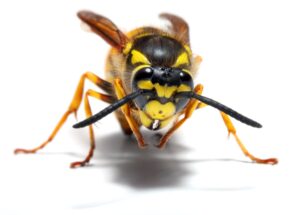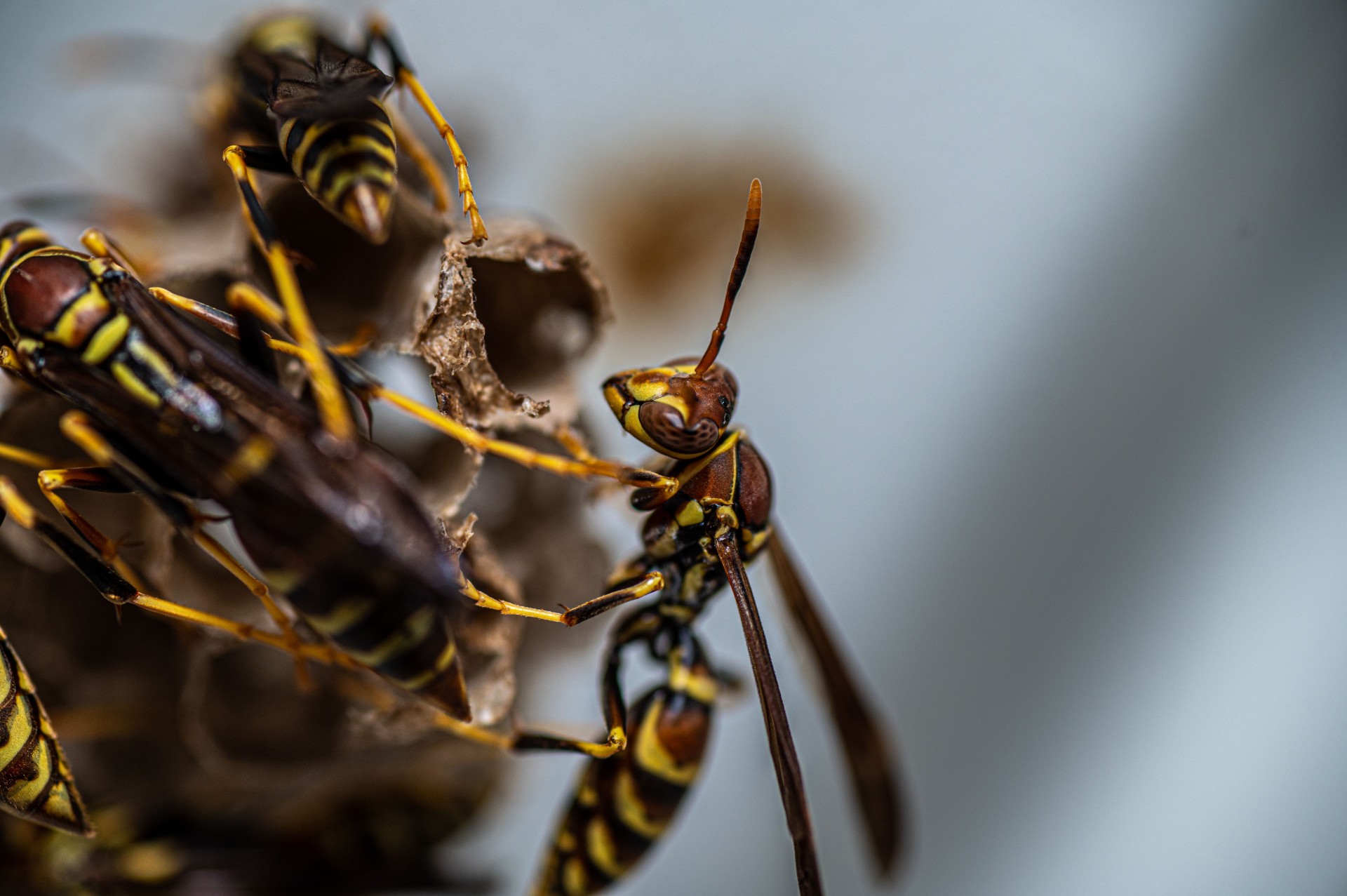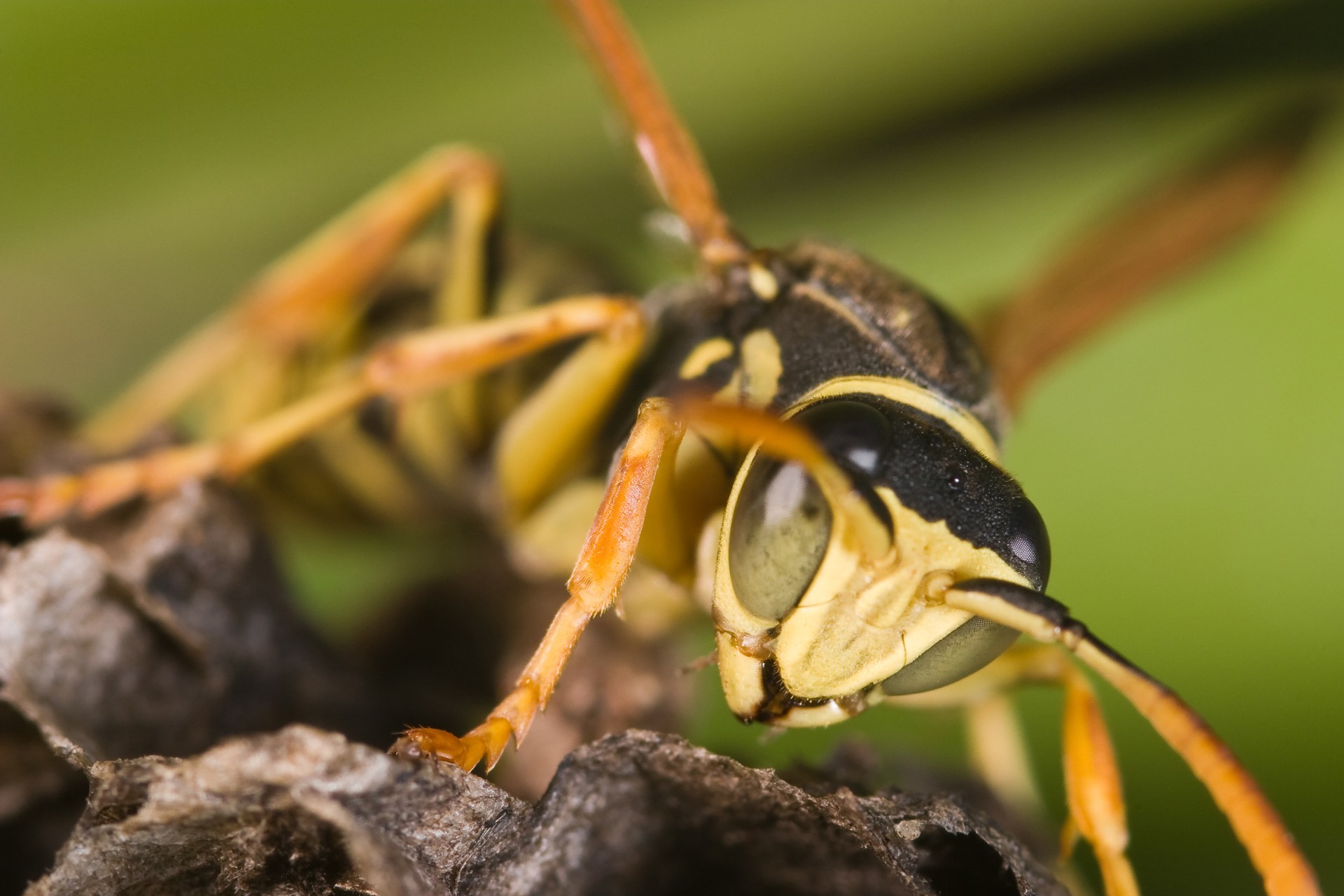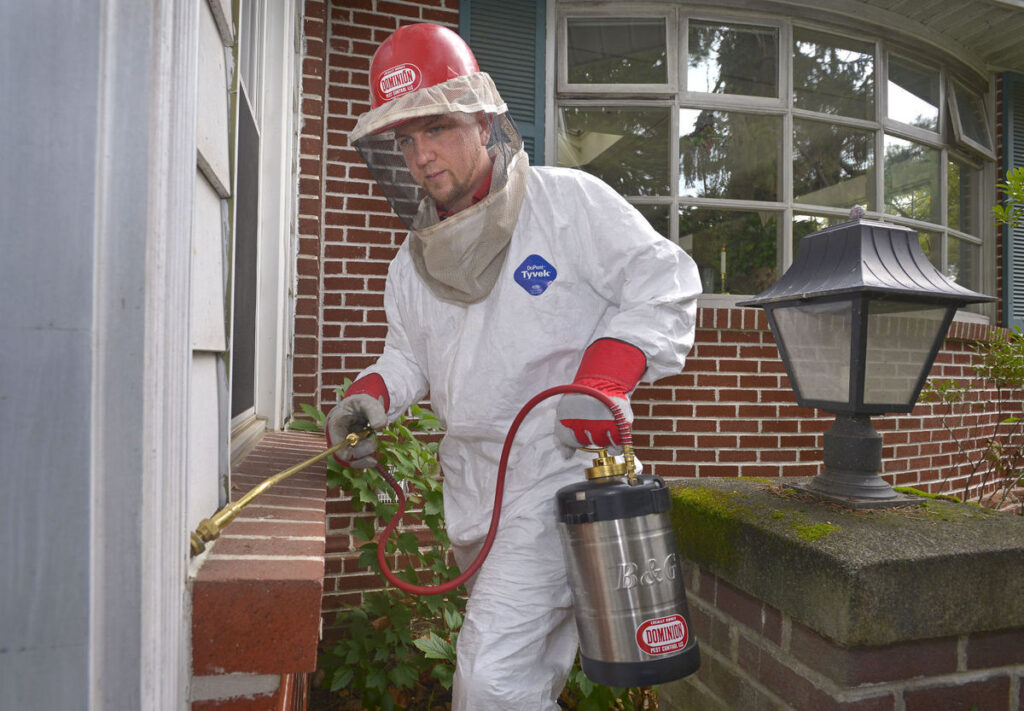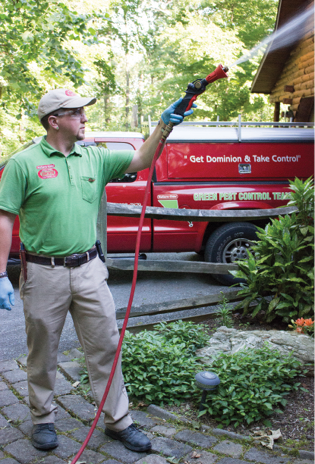How to Tell if You Have Yellow Jackets/Wasps
Wondering how to tell if you have yellow jackets? These aggressive wasps are easy to identify by their distinct yellow and black markings, rapid flight patterns, and paper-like nests. Bees, on the other hand, have a fuzzier, rounder appearance and an orange-brown color. Yellow jackets are highly territorial and can sting multiple times, making infestations a serious concern for homeowners and businesses.
A Dominion Pest Control technician can conduct a thorough yellow jacket inspection and identify a wasp infestation. If you have a yellow jacket problem on your property, we will create a customized treatment plan for safe and effective removal. Our expertise in yellow jacket control ensures complete extermination and long-term protection.
Yellow Jackets
What Are the Most Common Types of Yellow Jackets in Pennsylvania?
Pennsylvania is home to several species of yellow jackets, each with distinct nesting habits and behaviors:
Bald-Faced Hornet (Dolichovespula maculata) – Technically a type of yellow jacket, these large black-and-white wasps create aerial nests in trees and buildings.
Eastern Yellow Jacket (Vespula maculifrons) – The most common species in Pennsylvania, they build underground nests and are highly aggressive when disturbed.
German Yellow Jacket (Vespula germanica) – Often found nesting inside walls, attics, and voids in buildings. They are a major nuisance in urban and suburban areas.
Southern Yellow Jacket (Vespula squamosa) – Primarily found in the southern part of Pennsylvania, these wasps build massive underground nests and can be extremely aggressive.
Are All Wasps Yellow Jackets?
No, not all wasps are yellow jackets. All yellow jackets are wasps, however.
Yellow jackets belong to the Vespidae family and are classified under the Vespula and Dolichovespula genera. They are distinct from paper wasps (Polistes spp.), which build open, umbrella-shaped nests, and hornets (such as the bald-faced hornet, Dolichovespula maculata), which create large, enclosed paper nests.
Yellow jackets are more aggressive than most other wasps and are known for their bright yellow and black markings, rapid flight, and underground or hidden nest-building habits. So, while yellow jackets are a type of wasp, when people refer to “wasps,” they may also mean paper wasps, hornets, mud daubers, cicada killers, bald-faced hornets, or gold digger wasps.
When Are Yellow Jackets Most Active in Pennsylvania?
Yellow jacket activity in Pennsylvania follows a seasonal pattern, with peak wasp infestations occurring in late summer and early fall:
Spring (March-May) – Queen yellow jackets emerge from hibernation and begin building nests. Activity is low during this period.
Summer (June-August) – Colonies grow rapidly, and workers become more aggressive as they seek food sources, including sweets and proteins.
Fall (September-October) – Yellow jackets reach peak population levels and exhibit increased aggression as they compete for food before winter.
Winter (November-February) – Most colonies die off in the winter, except for fertilized queens, who hibernate and establish new nests the following spring.
Regional Yellow Jacket Activity in Pennsylvania:
- Southeastern PA (Philadelphia, Bucks, Montgomery, Chester, Delaware Counties) – High activity in urban areas due to nesting in walls, attics, and dumpsters. German yellow jackets are a major concern.
- Central PA (Harrisburg, Lancaster, York, Lebanon) – High ground-nesting yellow jacket populations, especially in wooded and suburban areas.
- Western & Northern PA (Pittsburgh, Erie, Scranton) – Moderate activity with a mix of ground and aerial nesters, particularly in rural and forested regions.
Signs of a Yellow Jacket Infestation:
- Frequent Yellow Jacket Sightings – Seeing multiple yellow jackets buzzing around outdoor spaces, near trash cans, or inside structures is a sign of an active nest nearby.
- Burrowed Holes in the Ground – Unlike other wasps, many yellow jacket species build nests underground, often in abandoned rodent burrows or loose soil.
- Paper-Like Nests – Some wasp species build hanging nests in trees, attics, wall voids, or under decks. These nests have a papery appearance and grow rapidly during peak season.
- Increased Aggression – Yellow jackets are more aggressive than other stinging insects. If they swarm unprovoked, a wasp infestation is likely nearby.
- Buzzing Sounds in Walls or Ceilings – If yellow jackets establish a nest within a structure, you may hear a faint buzzing noise from inside walls or attics.
How to Get Rid of Yellow Jackets
Pest Control may use the following yellow jacket treatment options:
Preventative Exclusion – Sealing entry points around structures to prevent future infestations.
Wasp Nest Removal – Physically removing wasps nests when accessible, ensuring the colony is completely eradicated.
Insecticidal Dust Treatment – Applying specialized dust into nests in walls, ground burrows, or hard-to-reach areas to eliminate the colony at the source.
Liquid Treatments – Spraying targeted insecticides around nesting sites and high-traffic areas to kill yellow jackets on contact.
Baiting Systems – Using attractive bait laced with insecticide to eliminate workers and indirectly destroy the nest.
Common Options We Do Not Recommend
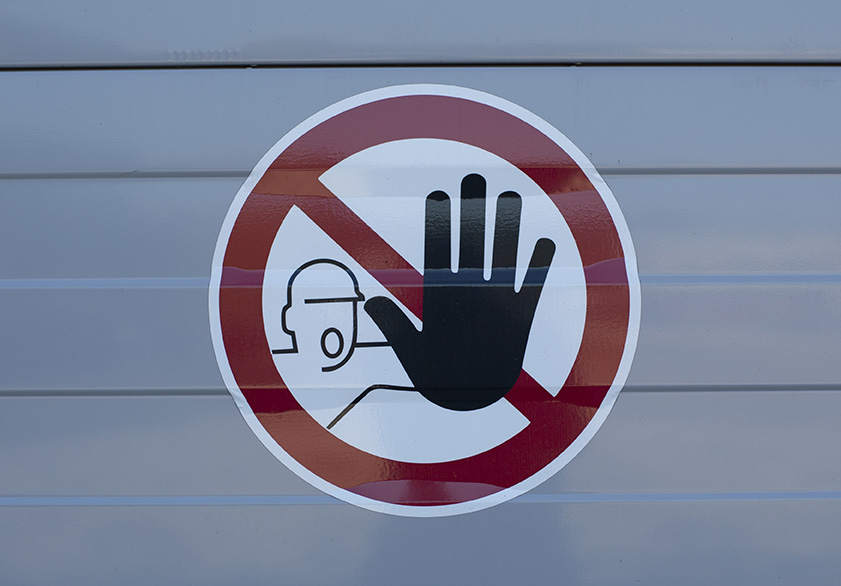
- DIY Wasp Sprays – Most over-the-counter sprays require close contact and can provoke swarming, making wasp removal dangerous.
- Knocking Down Nests – Disturbing a yellow jacket nest without professional equipment can lead to aggressive attacks and multiple stings.
- Home Remedies (Soapy Water, Vinegar, etc.) – These methods are ineffective against large colonies and do not provide long-term control.
What’s My Next Step for Yellow Jacket Control?
Choose peace of mind! If you suspect a yellow jacket infestation, use our form to start living sting-free. Dominion Pest Control will get in touch ASAP.
Pricing: Professional yellow jacket extermination typically ranges from $200-$600, depending on nest location and severity. After an inspection, our technician will provide a detailed quote.
How to Prepare for Your Yellow Jacket Extermination
Preparation is minimal but essential for safe and effective treatment. Your technician will provide detailed instructions, but general preparation steps include:
Secure Pets and Children Indoors – Ensure no one is near the treatment site during extermination.
Identify Nest Location – Note where yellow jackets are frequently seen entering and exiting.
Keep Distance from the Nest – Avoid disturbing the area before treatment to prevent aggression.
Prevention: Best Next Steps to Avoid Re-Infestation of Yellow Jackets
After your property has been treated, follow these steps to prevent future yellow jacket problems:
- Seal Entry Points: Close off gaps in siding, vents, and roofing to prevent nesting inside walls and attics.
- Keep Trash Cans Covered: Secure garbage bins with tight-fitting lids to eliminate food sources.
- Remove Food Sources: Clean up sugary spills, fallen fruit, and exposed pet food that attract yellow jackets.
- Trim Overgrown Vegetation: Reduce hiding spots by maintaining shrubs, trees, and tall grass.
- Schedule Regular Inspections: Dominion Pest Control can provide routine inspections to identify and eliminate nests before they become a problem.
By following these steps, you can keep your home and outdoor spaces free of yellow jacket infestations.
FAQs
How do I know if I have yellow jackets or another type of wasp?
Yellow jackets have bright yellow and black markings, rapid movements, and aggressive behavior. Unlike honeybees, they do not have hairy bodies and are capable of stinging multiple times.
Can yellow jackets sting multiple times?
Yes, unlike honeybees, yellow jackets do not lose their stinger and can sting multiple times, making them particularly dangerous.
Do yellow jackets build nests in walls?
Yes, German yellow jackets frequently nest in walls, attics, and voids within structures, requiring professional wasp removal.
How long does yellow jacket treatment take?
Most treatments take under an hour, but full colony elimination may take up to 48 hours, depending on the method used.
Can I remove a yellow jacket nest myself?
Attempting to remove a nest without professional help is highly dangerous. Yellow jackets are extremely defensive and will swarm if disturbed. Dominion Pest Control provides safe and complete waste nest and wasp removal.
